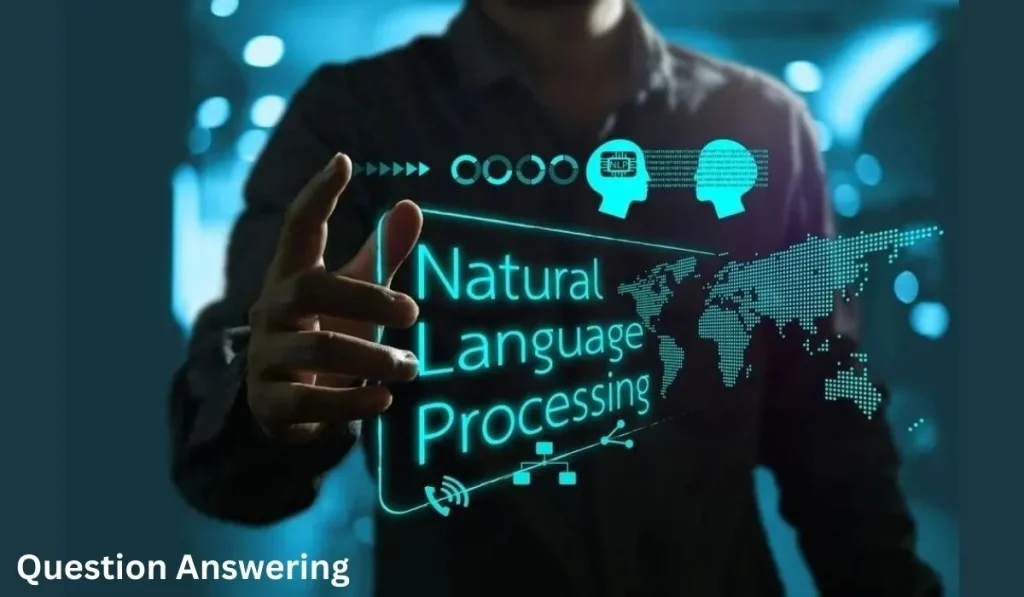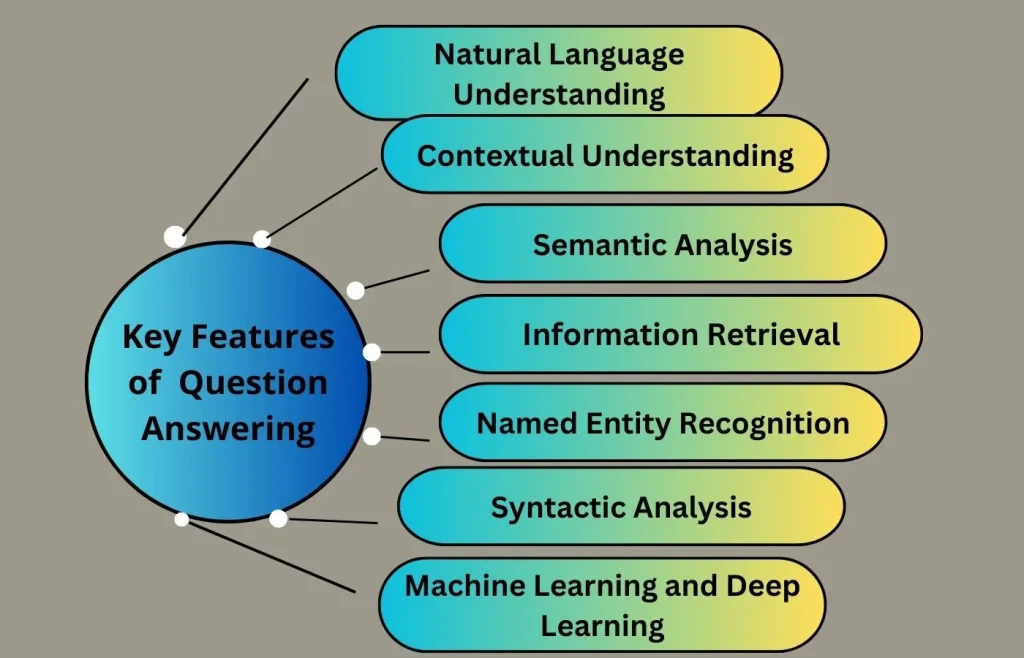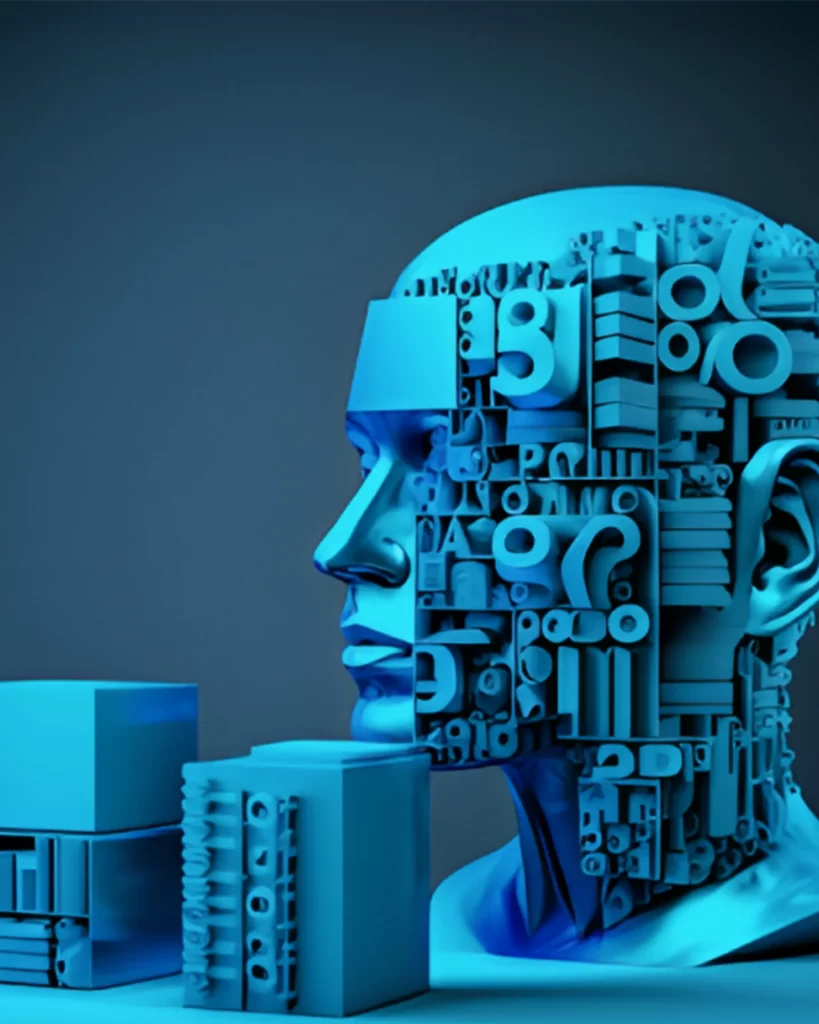Natural Language Processing (NLP) has revolutionized the way machines interact with humans by enabling them to understand and generate human language. Moreover, one of the fascinating applications of NLP is in question answering. In this context, intelligent assistants are built to provide accurate and relevant answers to user queries. Therefore, in this article, we will explore the foundations of NLP for question-answering and discuss how it powers the development of intelligent assistants.
Exciting Introduction To The NLP for Question Answering
NLP for question answering is an interdisciplinary field that combines techniques from linguistics, computer science, and artificial intelligence. Moreover, it aims to create systems that can comprehend and respond to questions posed in natural language. These systems leverage a combination of information retrieval, natural language understanding, and machine learning techniques. Additionally, they extract relevant information from vast amounts of data and generate concise and meaningful answers.

Understanding the Basics of Natural Language Processing (NLP)
NLP is a branch of artificial intelligence that focuses on the interaction between computers and human language. It involves various tasks such as text classification, named entity recognition, sentiment analysis, and language modeling. NLP algorithms process and analyze linguistic data to derive insights, understand meaning, and generate responses that mimic human language.
The Importance of Question Answering Systems
Question answering systems have gained immense popularity due to their ability to provide instant and accurate responses to user queries. From virtual assistants like Siri and Alexa to customer support chatbots, question answering systems have become an integral part of our daily lives. These systems improve user experience, enhance productivity, and enable efficient information retrieval.
Building Blocks of Question Answering Systems
To build intelligent assistants for question answering, several fundamental components need to be considered. These components include:
Information Retrieval
Information retrieval is the process of finding relevant documents or data points that contain information related to a given query. It involves techniques like indexing, querying, and ranking in order to retrieve the most relevant information from a large collection of documents or a knowledge base.
Natural Language Understanding
Natural language understanding focuses on deciphering the meaning of human language. Additionally, it involves parsing and interpreting text to extract entities, relationships, and sentiments. Various techniques, such as named entity recognition, part-of-speech tagging, and syntactic parsing, aid in understanding the structure and semantics of sentences.
Machine Learning
Machine learning plays a crucial role in question answering systems. Supervised and unsupervised learning techniques are employed to train models on labeled data, enabling them to make predictions and generate accurate answers. Techniques such as deep learning and neural networks have shown significant advancements in capturing the complex patterns present in natural language data.
Types for Natural Language Processing for Question Answering:
- Rule-based Systems: Rule-based systems, on the other hand, utilize predefined linguistic rules and patterns. These rules are manually created by experts and can be effective for straightforward question answering tasks.
- Information Retrieval: Information retrieval approaches treat question answering as a search problem. They use techniques such as indexing, ranking, and query expansion to retrieve relevant documents or passages that may contain the answer. The answer is then extracted from the retrieved information.
- Machine Learning: Machine learning approaches in question answering involve training models on labeled data to learn patterns and relationships between questions and answers. These models can be based on various algorithms, such as logistic regression, support vector machines, or neural networks. They can be trained to classify questions, identify answer types, or directly generate answers.
- Textual Entailment: Textual entailment approaches determine the relationship between a question and a potential answer by checking if the answer can be inferred from the question. These techniques typically involve comparing the semantic similarity or entailment between the question and answer pairs.
- Knowledge Graphs: Knowledge graph-based approaches leverage structured knowledge bases to provide answers. They represent information in a graph-like structure, where entities and their relationships are stored. Question answering involves querying the knowledge graph to retrieve relevant information and formulating an answer based on the graph’s structure and properties.
- Neural Networks: Neural network models, such as Recurrent Neural Networks (RNNs), Convolutional Neural Networks (CNNs), and Transformers, have shown significant advancements in question answering tasks. These models can process sequential or textual data and capture complex patterns and dependencies.
- Pre-trained Language Models: Pre-trained language models like BERT (Bidirectional Encoder Representations from Transformers) and GPT (Generative Pre-trained Transformer) are popular for question answering. They capture context and generate coherent answers.
Features of Natural Language Processing for Question Answering: Building Intelligent Assistants
Important key features of NLP for question answering: Understand queries, process natural language, provide accurate answers.
- Natural Language Understanding: NLP-based intelligent assistants, moreover, have the ability to understand and interpret natural language queries. By analyzing the structure, semantics, and context of the user’s question, they can extract the intended meaning and intent effectively.
- Contextual Understanding: NLP models employed in question answering systems possess contextual understanding capabilities. Moreover, they can take into account the broader context of the conversation or document, enabling them to offer more precise and contextually relevant answers.
- Semantic Analysis: By employing NLP techniques, semantic analysis becomes possible, enabling intelligent assistants to grasp the meaning and relationships between words and phrases in a question. Consequently, this capability assists in accurately capturing the user’s intent.
- Information Retrieval: Question answering systems utilize information retrieval techniques to search and retrieve relevant information from large text corpora or knowledge bases. This ensures that the answers provided are based on credible and reliable sources.
- Named Entity Recognition: NLP models can identify and extract named entities such as persons, organizations, locations, and dates from the user’s question. This assists in understanding the question’s context and retrieving specific information related to the entities mentioned.
- Syntactic Analysis: NLP-based intelligent assistants employ syntactic analysis techniques such as part-of-speech tagging and dependency parsing. These techniques help in understanding the grammatical structure of the question, aiding in accurate interpretation and answer generation.
- Machine Learning and Deep Learning: NLP models often leverage machine learning and deep learning algorithms to improve their performance. They can learn patterns and relationships from large amounts of data, enabling more accurate and robust question answering.

Step Involved in NLP for Question Answering: Building Intelligent Assistants
- Text vectorization: Techniques such as word embeddings or Bag-of-Words representation can convert the text data into numerical vectors that machine learning algorithms can process.
- Training data preparation: Prepare the training data by creating input-output pairs. The input can be a question, and the output can be the corresponding answer or answer-related information.
- Model selection: Choose a suitable NLP model for the question answering task. Options include rule-based models, machine learning models, or deep learning models like transformer-based architectures (e.g., BERT, GPT).
- Model evaluation: Evaluate the trained model using a separate validation or test dataset. Measure metrics like accuracy, precision, recall, and F1 score to assess the performance of the model.
- Model fine-tuning: Fine-tune the trained model using techniques like transfer learning or domain adaptation to improve its performance on specific question answering tasks or domains.
- Building the intelligent assistant: Develop an interactive interface or application that allows users to input questions and receive answers from the trained model. Additionally, design an intuitive user experience to facilitate easy interaction.
- Integration with natural language understanding: By integrating the question answering system with a natural language understanding module, the system gains the ability to understand user queries and extract relevant information for answering.
- Testing and debugging: Thoroughly test the intelligent assistant system to identify and fix any issues or bugs. Additionally, conduct user testing to gather feedback and improve the system’s usability.
- Deployment and monitoring: Deploy the intelligent assistant in a production environment. Additionally, monitor its performance, collect user feedback, and continually improve the system based on user interactions and real-world usage.
- Maintenance and updates: It is essential to regularly maintain and update the intelligent assistant in order to keep up with evolving user needs, improve performance, and incorporate advancements in NLP techniques and technologies.
The Best Question Answering Products:
- IBM Watson Assistant: IBM Watson Assistant, a powerful AI-powered assistant, excels in natural language understanding and question answering. Moreover, it can be customized and trained for specific domains and industries.
- Google Cloud Natural Language API:The Google Cloud Natural Language API offers advanced natural language processing capabilities, including question answering. Additionally, it provides robust features such as entity recognition, sentiment analysis, and language detection.
- OpenAI GPT-3: OpenAI GPT-3, a state-of-the-art language model, can be fine-tuned for question answering tasks. Additionally, its large-scale pre-training and advanced natural language processing capabilities make it a popular choice for question answering applications.
Techniques for Building Intelligent Assistants for question answering:
Several techniques are employed in building intelligent assistants for question answering:
Text Classification
Text classification involves categorizing text into predefined classes or categories. Moreover, this technique is commonly employed to classify questions into various types. Consequently, it enables the system to select the suitable approach for answering each question.
Named Entity Recognition
Named entity recognition focuses on identifying and extracting named entities such as names of people, organizations, locations, dates, and other specialized terms. This technique helps in understanding the context and identifying relevant information for generating accurate answers.
Sentiment Analysis
Sentiment analysis is the process of determining the sentiment or emotion expressed in a piece of text. By analyzing the sentiment of user queries or responses, intelligent assistants can adapt their answers and responses accordingly, providing a more personalized experience.
Language Modeling
Language modeling involves predicting the next word or sequence of words in a sentence. By leveraging language models trained on vast amounts of text data, intelligent assistants can generate coherent and contextually appropriate answers. Additionally, these models excel at capturing context and generating accurate responses.
Challenges in Natural Language Processing for Question Answering
Despite significant progress in NLP for question answering, several challenges persist:
Ambiguity and Polysemy
Natural language is often ambiguous, with words and phrases having multiple meanings. Consequently, resolving this ambiguity and correctly interpreting the intended meaning poses a complex challenge in question answering systems.
Understanding Context
Understanding context is crucial for generating accurate answers. Furthermore, we can disambiguate ambiguous queries based on the provided context. Additionally, we can utilize contextual information to enhance the relevance and accuracy of answers.
Handling Large Datasets
Training question answering systems requires large annotated datasets. Creating and curating such datasets can be time-consuming and resource-intensive. Additionally, handling and processing large datasets can pose computational challenges.
Recent Advances in Natural Language Processing for Question Answering
Recent advancements in NLP have paved the way for significant progress in question answering:
Transformer Models
Transformer models, such as the Transformer architecture, have revolutionized NLP tasks. These models leverage self-attention mechanisms to capture contextual relationships and have achieved state-of-the-art performance in various question answering benchmarks.
Pretrained Language Models
Pretrained language models, like BERT (Bidirectional Encoder Representations from Transformers), have proven effective in question answering tasks.Furthermore, experts can pretrain these models on large corpora of text and fine-tune them for specific question answering domains, leading to impressive outcomes.
Transfer Learning
Transfer learning has emerged as a powerful technique in NLP for question answering. Question answering systems can train more efficiently and achieve better performance on specific tasks by leveraging preexisting knowledge from large-scale language models.
Applications of Natural Language Processing in Question Answering
NLP for question answering finds applications in various domains:
Virtual Assistants
Virtual assistants like Siri, Alexa, and Google Assistant utilize NLP techniques for understanding user queries and providing accurate responses. They can perform tasks such as setting reminders, retrieving information, and executing commands based on user instructions.
Customer Support Systems
Customer support systems extensively utilize NLP-powered question answering systems.Moreover, these systems can handle a wide range of customer queries, provide instant solutions, and assist customers in troubleshooting common issues.
Chatbots
Chatbots, virtual agents, interact with users through text or voice. Thanks to NLP techniques, they understand queries, engage in conversations, and provide relevant answers or recommendations.
Benefits and Limitations
NLP for question answering offers several benefits:
– Improved user experience
-by providing instant and accurate responses.
– Enhanced productivity by automating information retrieval and analysis tasks.
– Efficient handling of a large volume of user queries, reducing the need for human intervention.
However, there are limitations to consider:
– Difficulty in handling complex and ambiguous queries.
– Over Reliance on pre-existing data and knowledge, limiting the system’s ability to reason or provide novel answers.
– Sensitivity to changes in language patterns and domain-specific contexts.
Future Trends and Possibilities
The future of NLP for question-answering holds exciting possibilities:
– Continued advancements in transformer models and pre-trained language models, leading to even more accurate and context-aware question-answering systems.
– Integration of multimodal information, such as text, images, and audio, to enhance the capabilities of intelligent assistants.
– In addition, the exploration of explainable AI techniques aims to improve transparency and trust in question-answering systems.
Conclusion
NLP for question answering has emerged as a powerful technology, enabling the development of intelligent assistants that can understand and respond to user queries in natural language. By leveraging techniques from information retrieval, natural language understanding, and machine learning, these systems have revolutionized the way we interact with machines. Additionally, these advancements have significantly transformed our interactions with technology. Despite challenges and limitations, ongoing research and advancements in NLP hold great promise for the future of question-answering systems.









